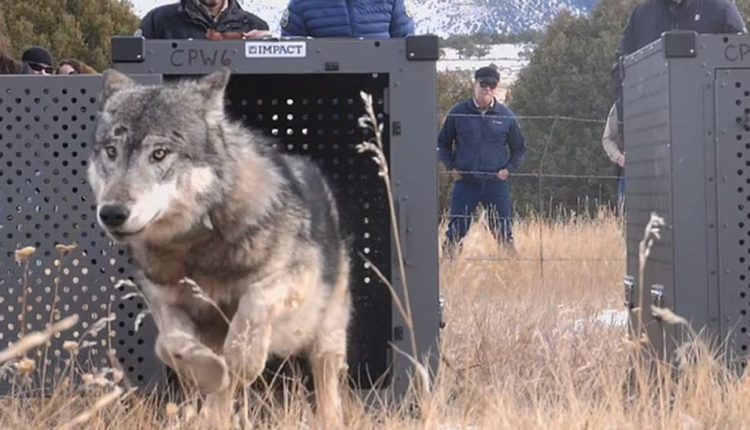
On a remote mountainside in Colorado’s Rockies, a momentous event unfolded as wildlife officials released five gray wolves into the wilderness, marking the initiation of the most ambitious wolf reintroduction program in the United States in nearly three decades.
This effort, approved by voters in a 2020 ballot measure, seeks to reintroduce up to 30 to 50 wolves over the next five years to fill one of the last remaining significant gaps in the western US for the species.
The First Wolf Released in Grand County
The release occurred in a Grand County location, deliberately kept undisclosed to protect the predators. As a latch flipped on a crate, a young female wolf bounded out and hesitated momentarily, making eye contact with the assembled audience of approximately 45 people before disappearing into the forest.
The event, witnessed by Colorado Governor Jared Polis and wildlife enthusiasts, symbolized the beginning of a significant ecological restoration effort.
The reintroduction program has intensified the longstanding divide between rural and urban residents. While city and suburb dwellers predominantly supported the initiative, rural areas, particularly conservative regions, expressed concerns about potential attacks on livestock.
Read more: Immigrants Headed To Chicago Left At Secret Locations To Evade Driving Fines
Colorado’s Quest for Reintroduction Faces Opposition from GOP Neighbors

The political wedge issue deepened when neighboring GOP-dominated states—Wyoming, Idaho, and Montana—refused to share their wolves for the Colorado effort. Consequently, Colorado turned to Oregon, another Democratic state, to secure the wolves for reintroduction.
As excited wildlife advocates launch a wolf-naming contest, ranchers in the Rocky Mountains grapple with anxieties. The fear of potential livestock attacks has escalated, particularly after a few wolves from Wyoming killed livestock that wandered into Colorado in recent years.
To address these concerns, ranchers will be compensated with fair market value, up to $15,000 per animal, for losses due to wolf attacks. Hunting groups also worry about the impact on big game animals like elk, a concern that could potentially alter the dynamics of the region’s ecosystems.
The reintroduction of wolves poses challenges and opportunities for wildlife conservationists and local communities. Residents who supported the reintroduction may have to reconcile with the fact that wildlife agents could kill wolves preying on livestock.
Nonetheless, proponents of the program see it as a critical step in rewilding and addressing the biodiversity extinction crisis. The release of these wolves into their natural habitat signifies a significant moment in the ongoing efforts to restore ecological balance and preserve the diverse species that inhabit the region.
As gray wolves return to the mountains of Colorado, the state embarks on a groundbreaking journey to restore a species that has been absent for decades. The reintroduction program aims to strike a delicate balance between conservation efforts and addressing the concerns of local communities.
The release of these wolves is not merely a symbolic act; it represents a tangible step toward rewilding and mitigating the challenges posed by human-wildlife interactions in the region.
Read more: SpaceX Under Fire: Environmental Lawsuits Renewed Over Texas Bird Habitats

